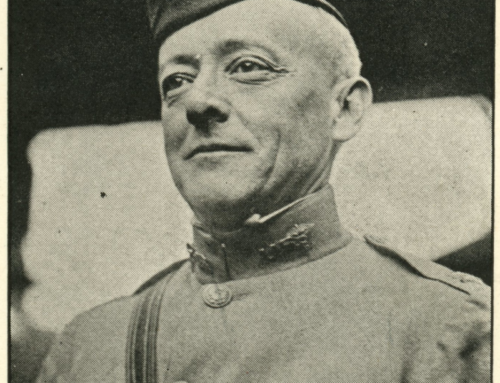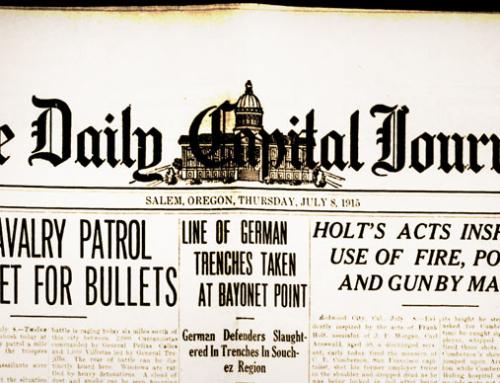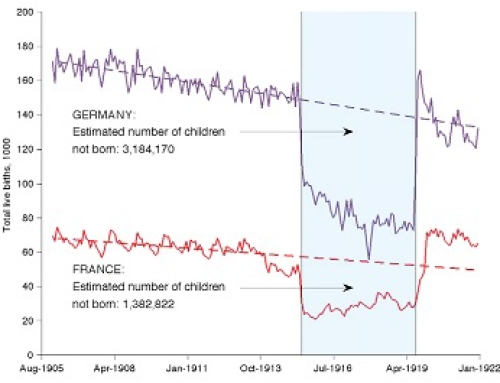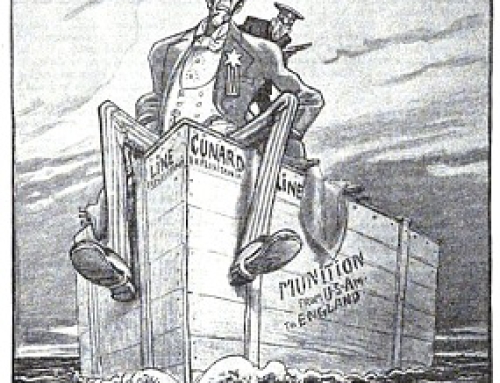by Richard van Pelt, WWI Correspondent
The transition from peace to war is a matter of – logistics. How do you go from being a nation without any real need for large armies to being fully capable of fighting a major war such as described daily in Salem’s papers? Though the United States was emerging as the major global economic power, we were utterly incapable of exercising any military power commensurate with our economic power. The size and the wealth of our economy and of our population was not matched by any comparable military infrastructure. In 1915 we did not have a military capable of fighting on the scale of the war being fought in Europe. We did not have a military capable of fighting on that scale even when we entered the war in 1917.
Each of the belligerents had (with the exception of Great Britain) millions under arms. They had standing armies and reserves that could be quickly called to the colors. The United States, protected by oceans to the east and to the west, with a peaceful and non-threatening Canada to the north and a small irritation in Mexico to the south had no need for the infrastructure necessary to play in the trenches of France.
As the war progressed and as it consumed the energy and manpower of the belligerents, it became clear to many in this country that our participation was more a question of when than if. Any involvement by this country would require the creation of a war-fighting structure.
Germany, France, Austria and Russia had compulsory military conscription. Great Britain relied upon a small volunteer force, protected as it was by the iron walls of the Royal Navy. To meet its obligations to France and to Belgium required that she vastly expand her military capabilities. Britain, too, would soon institute conscription.
In the newspapers the issue of volunteer versus conscripted armies was vigorously debated. No sympathy existed for conscription in the absence of conflict. The Statesman addressed this in an editorial, “The Volunteer System:”
The success of Great Britan raising an army of 3,000,000 men in eight months without recourse to conscription is the greatest triumph ever won for the volunteer method. It has a powerfully reassuring effect in this country, and served effectually to quiet the cries of the militarists.
Volunteering is the natural method of a free people, the method that fits best with democracy. It is particularly appropriate to both Great Britain and the United States, which have always opposed large standing armies on principle, and relied on the free, patriotic uprising of their citizens to meet any emergency.
The paper took comfort in Britain’s ability to raise as many troops as it did on a volunteer basis, noting that “If Britain can raise 3,000,000 men at call, we can raise twice as many.” The editor recognized that patriotism alone does not guarantee time enough “raw material for our defense” and is not an excuse for unpreparedness. “Our preparation,” the editor noted, “should not consist in great standing army, but in an established and perfected system for training and equipping the volunteers.” Reviewing our past history of preparing for war, the editor wrote:
In every one of our wars we have blundered terribly. there have been plenty of men, but there have been miserable facilities for turning them into soldiers. If we ever have another war we many have to train corps instead of companies; we may need millions instead of the tens of thousands that formerly sufficed. To that end, we ought to have plans for recruiting, mobilization, drilling, equipment and commissary worked out almost as completely as Germany’s have been.
Concluding the editorial, the editor noted the need for an officer corps: “And at the same time we ought to have a system whereby every man in the army that is capable of the higher military instruction should be trained for service as an officer.”







Leave A Comment